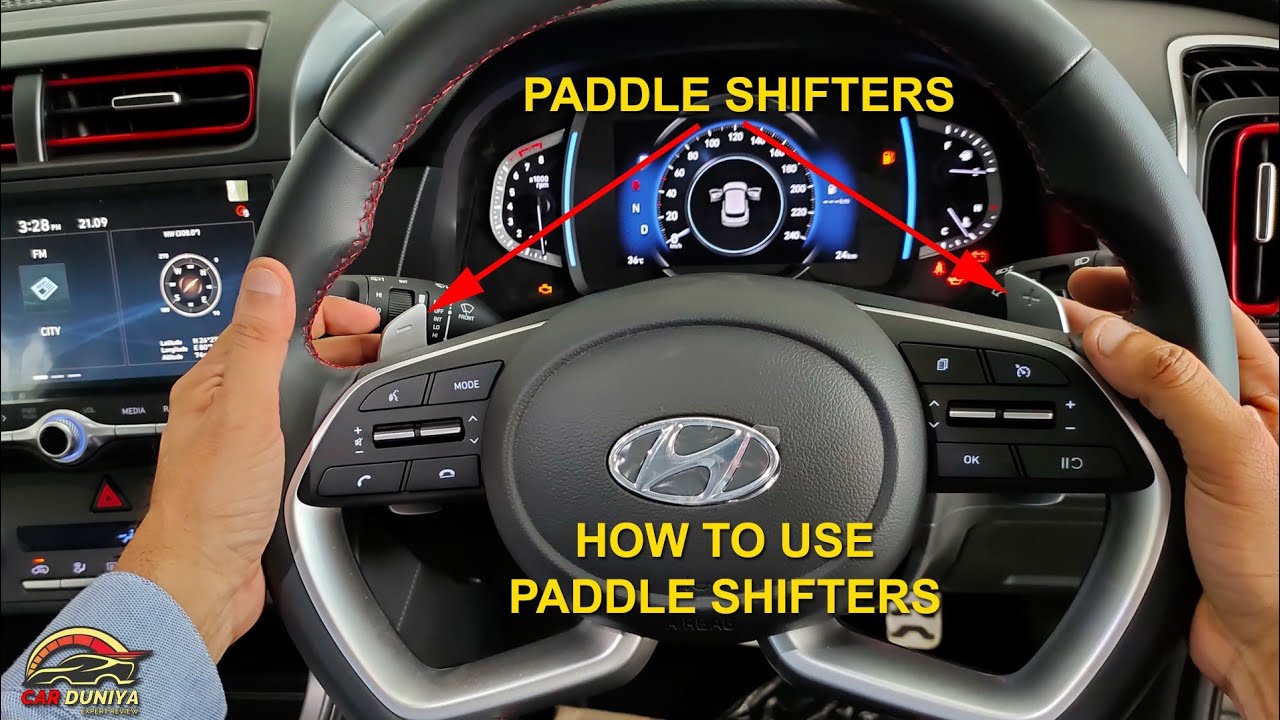What Are Paddle Shifters In Cars

Paddle Shifters: A Deep Dive for the DIY Enthusiast
So, you're curious about those little levers behind the steering wheel – the paddle shifters. More than just a sporty flourish, they represent a bridge between automatic convenience and manual control. This article provides a comprehensive understanding of paddle shifters, going beyond the marketing hype to reveal their technical underpinnings, functionality, and practical applications. Think of this as a detailed guide for the experienced DIYer who wants to understand *exactly* what's going on inside their vehicle.
Purpose and Why You Should Care
Understanding paddle shifters is useful for several reasons. Firstly, it allows you to diagnose potential issues with your transmission control system. A malfunctioning paddle shifter can point to problems with the wiring, the shifter mechanism itself, or even the transmission control module (TCM). Secondly, it can inform your decisions about vehicle modifications. Perhaps you're considering upgrading to a more responsive TCM, or even swapping out your steering wheel for one with improved paddle shifters. Finally, knowledge of paddle shifters empowers you to drive more efficiently and potentially enhance the performance characteristics of your car.
Key Specs and Main Parts
At their core, paddle shifters are a simple yet elegant solution for manual gear selection in an automatic transmission vehicle. The key components can be broken down as follows:
- Paddles: These are the physical levers, typically located behind the steering wheel, allowing the driver to upshift (+) or downshift (-). They can be made of various materials, including plastic, aluminum, or carbon fiber.
- Switch Assemblies: Each paddle is connected to a switch assembly. When a paddle is pulled, it activates a switch, sending an electrical signal to the TCM. These switches are usually simple momentary contact switches.
- Wiring Harness: The electrical signals from the switch assemblies travel to the TCM via a dedicated wiring harness. The quality and condition of this harness are crucial for reliable operation. Damaged or corroded wiring can lead to intermittent or complete failure of the paddle shifters.
- Steering Wheel Clockspring/Spiral Cable: This is a critical component that allows electrical signals to pass from the rotating steering wheel to the stationary car body. It's essentially a coiled ribbon cable. Faults in the clockspring are a common cause of paddle shifter issues, as it handles all electrical functions for the steering wheel (airbag, horn, cruise control, etc.).
- Transmission Control Module (TCM): This is the "brain" of the automatic transmission. It receives the signals from the paddle shifters, interprets the driver's intention (upshift or downshift), and commands the transmission to execute the shift. The TCM uses sophisticated algorithms and sensors to determine the appropriate shift timing and gear ratio.
How It Works: The Signal Chain
The operation of paddle shifters can be described as a simple signal chain:
- Driver Action: The driver pulls either the upshift (+) or downshift (-) paddle.
- Switch Activation: Pulling the paddle activates the corresponding switch within the switch assembly.
- Signal Transmission: The activated switch sends an electrical signal through the wiring harness, passing through the steering wheel clockspring.
- TCM Processing: The signal reaches the TCM, which interprets it as a request to upshift or downshift.
- Shift Execution: The TCM then signals the transmission's solenoids and other actuators to execute the gear change. It also adjusts engine timing and fuel delivery to ensure a smooth and efficient shift.
It's important to understand that the TCM doesn't blindly follow the driver's commands. It takes into account various factors, such as engine speed, vehicle speed, throttle position, and current gear, to determine if the requested shift is safe and appropriate. For example, the TCM might prevent a downshift if it would cause the engine to over-rev. This "safety net" protects the engine and transmission from damage.
Real-World Use and Basic Troubleshooting
Here are a few troubleshooting tips you can use to diagnose common paddle shifter problems:
- Paddle Shifter Inoperable: If neither paddle is working, the most likely culprit is a problem with the clockspring or the main wiring harness connecting to the steering wheel. Use a multimeter to check for continuity in the wiring.
- One Paddle Not Working: If only one paddle is malfunctioning, focus on the switch assembly for that specific paddle and the wiring leading from it. Clean the switch contacts with electrical contact cleaner.
- Delayed or Erratic Shifts: This could indicate a problem with the TCM or the transmission itself. Check for any diagnostic trouble codes (DTCs) related to the transmission using an OBD-II scanner.
- Check Fuses: Always start with the basics. Check the fuses related to the transmission and TCM. A blown fuse can disable the paddle shifters.
Important Note: Accessing the steering wheel clockspring and the TCM often requires specialized tools and knowledge. If you are not comfortable working with these components, it is best to consult a qualified mechanic.
Safety Considerations
Working with automotive electrical systems can be dangerous. Always disconnect the negative terminal of the battery before working on any electrical components. The steering wheel clockspring is particularly sensitive. Improper handling can damage it, potentially disabling the airbag system. If you are working on the clockspring, be sure to follow the manufacturer's instructions carefully. The airbag system is a potentially lethal device if handled incorrectly.
Downloading the Diagram
A detailed wiring diagram of a typical paddle shifter system can be invaluable for troubleshooting and repair. This diagram illustrates the connection points, wire colors, and component locations within the system. Having the diagram allows you to effectively trace circuits and identify potential points of failure. We have a file available for download, providing a comprehensive visual representation of a standard paddle shifter system. Contact us for access.
